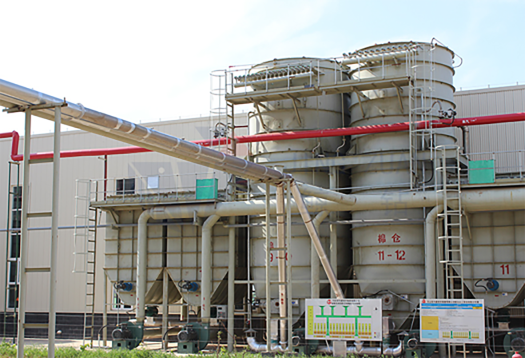
Dec . 05, 2024 00:30 Back to list
Hydroxyethyl Cellulose CAS Number and Its Applications in Various Industries
Hydroxyethyl Cellulose An Overview
Hydroxyethyl cellulose (HEC) is a non-ionic, water-soluble polymer derived from cellulose, a natural polymer extracted from plants. With its unique properties, HEC has become an essential ingredient across various industries, including pharmaceuticals, cosmetics, food, and construction. The CAS number for hydroxyethyl cellulose is 9004-62-0, which helps to identify it uniquely in chemical databases.
Chemical Structure and Characteristics
Hydroxyethyl cellulose is synthesized by substituting hydroxyl groups on the cellulose molecule with hydroxyethyl groups. This modification not only enhances its solubility in water but also provides several beneficial characteristics. HEC is known for its excellent thickening, emulsifying, and film-forming properties. The degree of substitution (the average number of hydroxyethyl groups per glucose unit in cellulose) significantly influences its properties, such as viscosity and solubility.
One of the remarkable features of HEC is its ability to form gels when used in specific concentrations. This gel formation is temperature-sensitive and can be further manipulated through pH adjustments, making it a valuable ingredient in numerous applications.
Applications in Various Industries
1. Pharmaceuticals In the pharmaceutical industry, hydroxyethyl cellulose serves multiple purposes. It is commonly used as a thickener in ointments and topical creams, ensuring even distribution and stability of active ingredients. Its biocompatibility and non-toxic nature make it suitable for use in drug formulations, as it can enhance the viscosity of solutions and suspensions. Additionally, HEC is utilized in sustained-release drug delivery systems, allowing for the controlled release of medications over time.
hydroxyethyl cellulose cas number

2. Cosmetics The cosmetic industry also extensively uses HEC due to its thickening and stabilizing properties. It is found in a variety of products, such as shampoos, conditioners, lotions, and gels. HEC helps to improve product texture and feel while providing moisture retention. Its film-forming ability contributes to the longevity of makeup products, making it a preferred ingredient in foundations and other cosmetic items.
3. Food Industry In the food sector, hydroxyethyl cellulose serves as a food thickener and stabilizer. It is used in sauces, dressings, and dairy products to enhance texture and prevent separation. As a cellulose derivative, it is considered safe and is often employed as a substitute for fat in low-calorie products, providing a similar mouthfeel without the additional calories.
4. Construction Hydroxyethyl cellulose is widely used in the construction industry as a viscosity modifier in water-based formulations such as paints, coatings, and adhesives. It helps to improve the workability of these products, allowing for better application and adhesion to surfaces. Moreover, its water retention properties aid in preventing premature drying of mortar and concrete, thus enhancing durability.
Environmental Considerations
As a cellulose derivative, hydroxyethyl cellulose is seen as a more environmentally friendly alternative to many synthetic polymers. Being derived from renewable resources, it aligns with sustainable practices. Additionally, HEC is biodegradable, which adds to its appeal for eco-conscious consumers and manufacturers alike.
Conclusion
Hydroxyethyl cellulose, identified by its CAS number 9004-62-0, is a versatile and valuable compound with a broad range of applications spanning several industries. Its ability to enhance texture, stability, and performance makes it a vital ingredient, particularly in pharmaceuticals, cosmetics, food, and construction. As industries increasingly prioritize sustainability, the demand for HEC may continue to grow, further establishing its role as an essential component in modern formulations. As research continues to explore its potential in new applications, HEC is likely to remain a prominent player in the realm of functional materials.
-
Versatile Hpmc Uses in Different Industries
NewsJun.19,2025
-
Redispersible Powder's Role in Enhancing Durability of Construction Products
NewsJun.19,2025
-
Hydroxyethyl Cellulose Applications Driving Green Industrial Processes
NewsJun.19,2025
-
Exploring Different Redispersible Polymer Powder
NewsJun.19,2025
-
Choosing the Right Mortar Bonding Agent
NewsJun.19,2025
-
Applications and Significance of China Hpmc in Modern Industries
NewsJun.19,2025







